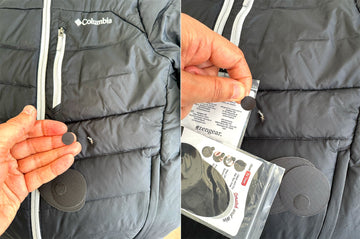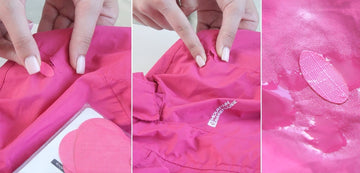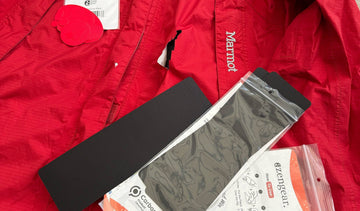The Health Risks of Getting Soaked Outdoors (and How to Avoid Them)
by Emily Jannet on Jul 16, 2025
There’s something magical about being out in nature — the fresh air, the endless views, and the feeling of freedom that comes from leaving daily life behind. But as beautiful as the outdoors can be, nature can also be unpredictable. One of the most common surprises on a hike or outdoor adventure? Sudden rain. While getting a little wet might not seem like a big deal, getting completely soaked outdoors can actually pose serious health risks if you're not prepared.
The Hidden Dangers of Getting Wet
When you’re out on the trail or camping, you’re often far from quick shelter. Once your clothes and gear get wet, your body starts losing heat much faster than you might expect. Wet clothing pulls warmth away from your skin, which can quickly lead to chilling even if the air temperature doesn’t seem that cold.
Hypothermia Can Happen Even in Mild Weather
Most people think hypothermia is only a risk in freezing conditions, but it can actually set in at temperatures as high as 10°C (50°F) if you’re wet and exposed to wind. As your core body temperature drops, you can start to feel extremely fatigued, confused, and shivery. In severe cases, hypothermia is life-threatening.
The problem is even worse when you combine wet clothes with wind. Wind chill accelerates heat loss, making it feel much colder than the actual temperature. If you’ve ever shivered uncontrollably in wet clothes, you’ve felt the early stages of this process.
Skin Problems and Blisters
Staying wet for long periods also affects your skin. Wet socks and shoes create a perfect environment for blisters and even fungal infections. Damp clothes can cause chafing and painful rashes. When your skin is constantly soft from being wet, it becomes more prone to cuts and scrapes, which can become infected if not treated properly.
Increased Risk of Illness
While rain itself doesn’t make you “catch a cold,” getting soaked and chilled can weaken your immune system temporarily, making it easier for you to get sick once you’re back indoors. Your body needs to work harder to keep warm, using up energy that would otherwise help fight off viruses.
Mental Fatigue and Poor Decision-Making
Another overlooked danger is how being cold and wet affects your mindset. When you're uncomfortable and shivering, your energy drops and your focus narrows. This makes it harder to navigate, make good decisions, or even find shelter safely. Small mistakes can turn into big problems quickly when your body and mind are stressed.
The Simple Solution: Pack an Emergency Poncho
The good news is that avoiding all these risks is surprisingly simple. One of the easiest ways to stay safe is by carrying a lightweight, packable emergency poncho. Unlike heavier rain jackets that take up a lot of space, an emergency poncho folds down to almost nothing and weighs barely anything.
A good poncho, like the one from AzenGear, can be a total lifesaver. It slips over all your layers and backpack, creating a quick barrier that keeps you dry in sudden rain. Even if you’re caught far from camp or the car, having that extra protection can make a huge difference.
Why a Poncho Works So Well
A poncho covers more than just your torso — it shields your legs, arms, and even your pack. This full-body coverage means your clothes stay dry, helping you retain your body heat. Plus, ponchos are easy to put on quickly, which is essential when the rain starts falling fast.
Some hikers think they can just “tough it out” in the rain, but experienced adventurers know that once you’re soaked, there’s no easy way to warm up outdoors. Staying dry from the start is always the best strategy.
Extra Tips to Stay Dry and Warm
Besides carrying a poncho, here are a few more tips to help you avoid getting soaked and stay healthy:
-
Check the forecast: Always look at the weather before you head out, but remember, forecasts aren’t always perfect.
-
Pack extra clothes: Even a dry pair of socks can make a big difference if you get wet feet.
-
Use quick-dry materials: Cotton holds moisture and dries slowly. Choose synthetic or wool layers that dry faster and keep you warmer even if damp.
-
Layer smartly: Bring a light base layer, insulating mid-layer, and a waterproof outer layer — or a poncho — so you can adapt as the weather changes.
Stay Safe and Enjoy Your Adventures
Getting outdoors should be about enjoyment and freedom, not discomfort or danger. By understanding the real risks of getting soaked and taking a few simple precautions — like carrying an emergency poncho — you can keep your adventures safe and comfortable.
Next time you pack your bag, don’t forget that tiny, lightweight poncho. It might end up being the most important thing you bring along.
Buy on https://azengear.com or #Amazon






